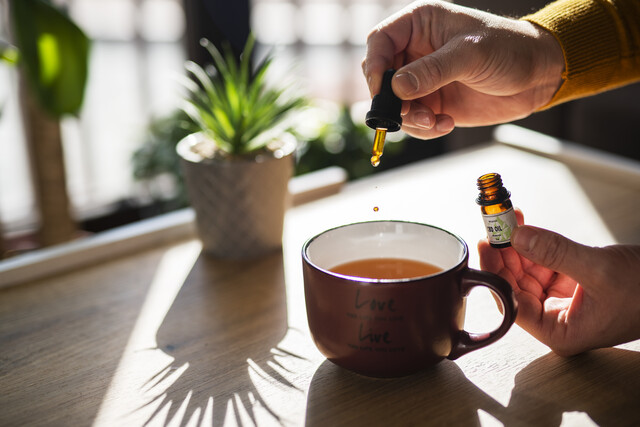Becoming aware of your thoughts, surroundings, sounds, smells, bodily movements, and especially your breath are fundamental techniques of meditation. The basic objective is to be present � here and now. It is the act � some would say the art � of being precisely in the moment, neither controlling your mind rigidly nor letting it go completely, but being aware of who you are and where you are.
When many people think of meditation, they conjure up images of a Buddha-like person sitting in a lotus position surrounded by tranquil music and burning incense. While this familiar image is indeed how many people practice Meditation, it is certainly not the only way.
Meditation is, first and foremost, about being comfortable and at peace. As we explore several techniques of practicing meditation, you may pick and choose the practices that make you feel comfortable. It is important to leave your preconceived notions of meditation behind you, keep an open mind, and be willing to learn the art of meditation.
Meditation is not a practice of achieving ecstasy, nor is it an attempt to be a "better person." It is simply creating an environment in which we are able to reach a level of self-awareness that we are unable to do in our usual environment. It is the creation of a space in which you meet your fears and insecurities, and your hopes and dreams. It is the creation of a space in which you ask deep questions and, sometimes, receive answers. It is the process of both analyzing your thoughts and clearing your mind.
Before we explore the techniques of meditation practices in detail, we will first ensure that we set up the proper environment for our daily meditation. We are naturally influenced by the physical space around us, and creating surroundings filled with beauty, simplicity, and tranquility will aid you in achieving an effective meditation. The physical space we create for meditation does not need to be elaborate. In fact, simplicity is an extremely important and fundamental concept in meditation.
Establishing a routine whereby you practice in the same place and at the same time is recommended for meditation. You should commit yourself to meditate regularly and to adopt a routine. The daily commitment you make to meditation will aid you considerably in achieving a greater sense of harmony and self-awareness.
Many people who have a casual interest in meditation know that controlling one's breath is important in meditation. In fact, being mindful of one's breath is one of the most fundamental principles of meditation. In the section called Mindfulness of Breathing, we will explore the importance of calming the mind and opening ourselves up to the possibility of achieving a higher level of self-awareness and consciousness.
We will explore the two main types of meditation and how to effectively meditation in each of the two distinct styles:
Samadhi Meditation � Concentration Meditation, where one concentrates on a single object voluntarily and effortlessly for a period of time. In traditional Buddhist meditation, there are over 40 objects of meditation, such as earth, water, fire, etc., and breath is clearly one of the most popular objects of meditation among most practitioners.
Vipassana Meditation � Insight meditation, where one contemplates a situation or a thought, and analyzes one's observations and experience.
Whereas Vipassana meditation is about analysis, thinking, and contemplation, Samadhi meditation is simply calming the mind and concentrating on a single object
Health Benefits of Meditation
We will dedicate an entire chapter to the health benefits of meditation. Whereas it used to be practiced in Western culture by just a small portion of the population, today meditation is earning acceptance as a beneficial physical program. In countless medical journals, scientists have demonstrated their findings that meditation leads to better overall health and we will explore the specific ways in which it does, from the lowering of cholesterol and blood pressure, to the increase in self-esteem and well being.
Meditation has been practiced for thousands of years. Archeological finds from prehistoric times, especially Indian texts, contain references to many different forms of meditation. Tantras, or Indian scriptures, dating as far back as 5000 years ago, mention various techniques of meditation. Although its origins are deeply rooted in religious beliefs, meditation is not a religious practice. It is practiced by millions of non-religious people everyday who extol its countless health benefits.
Meditation was born in the Eastern culture. It was originally derived from Hinduism during the Vedic period, which extended from approximately 2,000 BCE to 600 BCE. Meditation was initially used by the Hindus as a way of discerning the true nature of God, or Brahman.
In approximately 500 BCE, the Buddha, Siddhartha Gautama, taught meditation to his many followers, and in doing so showed how meditation can assist in the Path to Enlightenment.
As we will discover, meditation does not simply involve sitting down and remaining perfectly still. Although sitting meditation is a method that is used by many people, millions of practitioners incorporate yoga into their meditation practices.
During the yoga poses you will practice breathing while doing a variety of poses meant to increase flexibility, strength, balance, and overall tranquility.
Yoga is a practice for the whole body. While it most certainly has many physical benefits like strength and flexibility, it nourishes your spirit as well. You will feel refreshed and relaxed after even your first few yoga sessions, and it is an excellent method to practice meditation.
Why Meditate?
It is often said that to achieve true happiness in life, one should not focus on the specific object they desire, but rather concentrate on something seemingly completely unconnected to it. If one continually searches for a state of bliss, the search will only lead to disappointment. Meditation is not a practice of achieving ecstasy, nor is it an attempt to be a better person. It is simply creating an environment in which we are able to "let go of the doing," as many yoga instructors are won't to say. It is the creation of a space in which you meet, head on, your fears and insecurities, and your hopes and dreams. It is the simple discipline of doing nothing, and doing nothing can be very difficult to do.
When meditating, we do not control our thoughts very tightly nor do we let them go unrestrained completely. This is a very fundamental principle of meditation. If we try to control our mind and thoughts, we will fail to achieve a sense of awareness. If we let go of our thoughts completely, chaos and interruptions will take over. So the practice of meditation is the act of letting the mind go but there is discipline involved, and the techniques for effective meditation are rather simple to learn.
Achieving awareness of your thoughts, surroundings, sounds, smells, bodily movements, and especially your breath are fundamental techniques of meditation. The basic principle is to be present � here and now. It is the act � some would say the art � of being precisely in the moment, neither controlling your mind rigidly nor letting it go completely, but being aware of who you are and where you are.
Breath, and mindfulness of breathing is a core concept in the practice of meditation. Breath does not have a religious or esoteric connotation. Breath is a natural, and a neutral, process. In meditation we simply become mindful of its functioning. In this mindfulness of breathing, we begin our study of the Hinayana, or the "narrow path." Hinayana is a Sanskrit term literally meaning "a low vehicle," and "yana" is a vehicle, or "way to enlightenment." This is not to say, however, that achieving a mindfulness of breathing is a narrow path or simple.
The human mind is a complicated wilderness of thoughts and emotions, from the very simple to the exotic. In our Western culture, we are constantly craving stimulation and our very short attention spans only invite our minds to wander. The hinayana, therefore, can be thought of as a vehicle literally on a narrow path � a path free of excursions, side trips, interruptions, and unnecessary speed. When we give in to the reality that we are not in a sports car racing towards an end goal, we can fully appreciate the act of simply being � being here and now, in the present, on the narrow path towards an open mind.
So rather than trying to hide from our emotions and problems, or racing towards that "brass ring," we acknowledge who we are, what we are, and where we are. Meditation brings our awareness of who we are to the surface rather than hiding our understanding with the clutter of noise and everyday interruptions. When we achieve this understanding, we realize that many aspects of our lives are not insurmountable or impossible to change.
Spiritual renewal should be one of the main objectives of your meditation practice. There are, of course, many ways to express one's spirituality. There are many who call this higher source of life "God," while others simply choose to acknowledge a Creator, or a higher being, from whom we derive peace, wisdom, and strength.
Peace of mind is a result of our spiritual renewal. In an expanded state of consciousness, we are better able to understand the problems and challenges we face. When we achieve a oneness with our Creator, we are able to resist the human temptation to engage in petty reactions to life's everyday challenges. We acquire an emotional maturity which helps us make better decisions and act accordingly.
Another objective of meditation is deep introspection. Introspection helps us gain clarity of mind, which helps us to more readily discern between right and wrong. With proper dedication, your meditation practice will instill in you a love of truth. You will discover what you wish to be. Through meditation we gain a clearer understanding of our life's purpose.
Benefits of Meditation
-
- Reduced Stress � meditation teaches us how to put life's little problems into perspective.
- Improved Concentration � a clear mind will increase your productivity.
- Tranquility � meditation reduces anxiety levels and lowers blood pressure.
- Self Confidence � builds self confidence and a stronger sense of who you are.
- Peace of Mind � meditation teaches us to find peace within ourselves, not through external sources.































